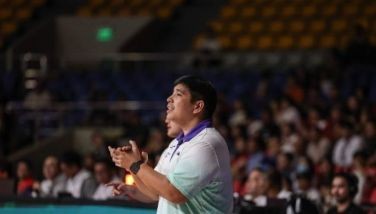July 4, not June 12
History is always written by powerful men and the truth can be sacrificed to give way to presidential biases and prejudices. I am one of the handful of Filipinos who truly believe that Philippine independence should be celebrated on July 4 and not on June 12. The anti-Americans are inclined to make reckless criticism that we are supposedly just aping the Americans by celebrating our Independence Day on July 4. June 12, to them, is more romantic and supportive of national pride. But June 12 is not the truth. July 4 is.
The so-called Freedom Day on June 12 was based on a unilateral declaration by the forces of the Magdalo faction of the Katipunan after they unceremoniously ousted the true leader, Gat Andres Bonifacio. The founder of the Katipunan and its duly-elected supremo was tricked into joining the Tejeros Convention, where Bonifacio was maliciously and systematically cheated in the mock elections dominated by henchmen of General Emilio Aguinaldo. The ilustrados of Cavite conspired under the leadership of the brothers Emilio and Baldomero Aguinaldo, and Mariano Trias, Mariano Alvarez, Edilberto Evangelista, Candido Tirona, and Felix Cuenca, who were mostly landed mestizos who did not like to be led by the unschooled poor man from Tondo. Thus both the president, Aguinaldo, and the vice president, Trias, were Caviteño.
The Aguinaldo Declaration was not recognized by the international community of nations. In fact, in defiance of that declaration on June 12, 1898, the Kingdom of Spain and the United States of America signed the landmark Treaty of Paris on December 10, 1898 by virtue of which the whole Philippine Islands, together with the islands of Guam and Puerto Rico were sold by Spain to the US for $20 million. That means that Spain continued to be in control of the islands even after June 12, 1898. The Tejeros Convention was an illegal ragtag assembly of Aguinaldo cronies and cohorts. The whole Visayas and Mindanao were not even represented in that so-called convention. Even the Malolos Convention did not have true and genuine representation from the south.
On the other hand, the July 4 Independence Day was recognized by the United Nations and all the members of the community of independent nations and sovereign states. After the Treaty of Paris, the Americans governed the Philippine Islands as its colony. In August 1916, the US Congress passed the Jones Law, otherwise known as the Philippine Autonomy Act of 1916. In 1933, the US Congress passed the Hare-Hawes-Cutting Law over the veto of President Herbert Hoover. It did not guarantee complete independence within 10 years. But Manuel Quezon asked the help of President Franklin Delano Roosevelt for a better law. True indeed, the US Congress passed in 1934 the Tydings-McDuffie Law with a more definite guarantee. In 1935, the Philippines convened a constitutional convention and ordained its own independence.
The guarantee was almost set aside when Japan invaded the Philippines after the infamous bombing of Pearl Harbor. World War II, however, was terminated in four years. The promise was fulfilled on July 4, 1946. From 1946 onward, the country celebrated its Freedom Day from the US every July 4, until President Diosdado P. Macapagal decided in 1962 to move the date of the celebration to June 12, the day in 1898 when Philippine revolutionary, Gen. Emilio Aguinaldo, proclaimed Philippine independence from Spain in his mansion in Kawit, Cavite. Such a declaration, however, did not receive the desired recognition from the US and other countries.
If we reflect on the true meaning of independence, we should realize that our country never became a truly independent nation from March 16, 1521 when Ferdinand Magellan claimed the whole Philippine Islands as a colony of the Kingdom of Spain, up to July 4, 1946 when the American flag was lowered and the Philippine flag hoisted in Luneta. That was a period of 425 years of subjugation.
If we add the four years of invasion, destruction, and oppression by Japan and 20 years of Marcos repression, including the martial law years, the Filipinos were subjugated by both foreign colonizers and local tyrants for 449 years. That is why the Filipino soul is wounded and scarred and the Filipino psyche has been traumatized and stigmatized so much. Nonetheless, we need to accept the truth that it was on July 4, 1946 that we became free, not on June 12, 1898. It should be the truth that can set us free.
- Latest























